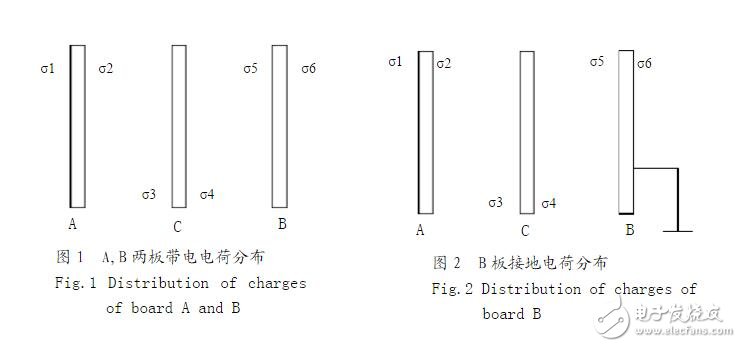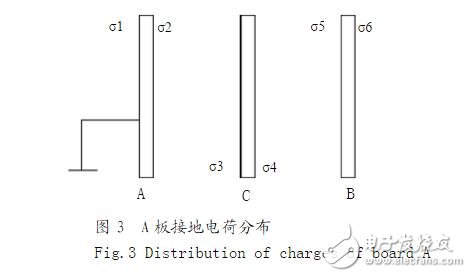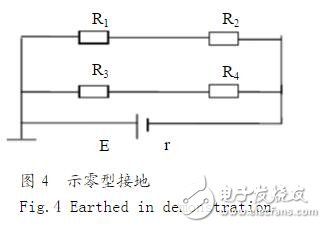It is very convenient to use the earth as the potential reference point and take the U ground=0. The grounding of the live conductor provides the possibility that the conductor exchanges electric charge with the “groundâ€. Therefore, the grounding of the conductor is indispensable in production and life.
Conductor grounding is widely used in production and life. When studying conductors in electrostatic fields, conductor grounding problems are often encountered. In electronic technology, "ground" is a very important concept, but the "ground" in electronic technology is often irrelevant to the earth. It is only a public equipotential system in the circuit, such as: radio, television Ground is just a potential reference point in the receiving line. Therefore, many beginners have many misunderstandings about many problems in the grounding of conductors, even in the understanding of the concept of grounding. Based on this, this paper summarizes and summarizes the connotation, types and functions of conductor grounding, and briefly discusses and analyzes the problems that people are easily confused and misunderstood.
Connotation of conductor groundingCharge exchange between conductor and earth
When the live conductor is grounded, it is generally considered that only the possibility of exchange of charge between the conductor and the earth is provided, and whether or not the charge is exchanged between the two cannot be generalized, and specific problems must be specifically analyzed.
For example: a positively-charged conductor whose potential is higher than the earth. If the conductor is grounded, the positive charge on the conductor will "flow" into the earth under the action of the electric field force, or the negative charge of the earth will "flow into" the conductor, and Charge neutralization. At this time, the conductor exchanges electric charge with the earth, but this exchange is not arbitrary and is governed by the law of electrostatic equilibrium.

Figure 1 and 2
As shown in Fig. 1, the space has three parallel metal plate plates A, B, C, and the three plates are equal in length and width, and are much larger than the plate spacing, and there is no electrified body and conductor outside the plate.
Let A and B be charged with Aq and Bq respectively. According to the electrostatic equilibrium condition and the law of charge conservation, the charge density on each plate surface can be obtained:

If the B board in Figure 1 is grounded (as shown in Figure 2), the ground provides a path for the B board to exchange charge with the ground. Since the B-plate must be equipotential to the earth, the charge on the B-board must be “moved†to the ground, causing 60??, while the surface charge densities of the A and C plates are redistributed, according to the electrostatic equilibrium condition and the law of charge conservation. The charge distribution is:


Then remove the B board grounding wire and ground the A board (as shown in Figure 3). Since the charge distribution on the B board is unchanged after the B board grounding wire is removed, when the A board is grounded and 10??, the surface charge density distribution of the A and C boards can be the same as that of the B board grounding. This shows that the charge distribution is not changed by changing the grounding of the A board, and the charge of the conductor board is not exchanged with the ground through the A board ground line. In fact, when the B board is grounded, the ABUUU ground is removed, and after the B board ground line is removed, the charge distribution is constant and the potential relationship is also unchanged.
As can be seen from the above examples, the grounding does not necessarily exchange charge, and the grounding only provides a "channel" for the exchange of charge between the charged conductor and the earth under equipotential conditions.
The position and role of the earth in the process of groundingThe potential at each point in the electric field is related to the choice of the potential zero, but the potential difference between the two points is independent of the choice of the potential zero. In the specific work, what makes sense is the difference in potential between the two points. Therefore, in engineering technology, the choice of the potential zero point must be based on certain principles, but also to consider the convenience of handling the problem. In theory, when calculating the potential of each point in the electric field generated by a finite-sized charged body, the infinity is usually selected as the zero point of the potential, but in practical problems, such as electrical equipment, instruments, etc., the earth is often selected as the potential. The zero point, that is, 0U? ground, the ground potential of all conductors is zero. Geophysical studies have shown that, in general, the atmosphere is positively charged relative to the Earth's surface, and the Earth can be considered a negatively charged conductor ball and is infinitely large for normal charged bodies. Generally, the charged body is connected to the earth, and the amount of charge q may flow in or out, causing a change in the earth potential. 0/(4)UqR????? Ground, because q? is small, R is extremely large, so U? The ground is negligible.
In addition, the amount of electricity carried by the conductor is small compared to the amount of charge of the earth. Therefore, the change in the distribution of the earth's charge due to electrostatic induction of the charged body near the ground is also extremely small, and can be neglected. Therefore, the earth is a large conductor with stable potential. It is convenient to use the earth as a reference for electric potential and to specify that the earth's potential is zero. Strictly speaking, the earth's potential relative to infinity is not equal to zero. However, the electrostatic experiment can prove that taking 0U? is equivalent to taking 0U??. Because all the experiments on the earth are carried out in the laboratory or in the factory, the size of which is much smaller than that of the earth. The space filled by the electric field excited by the charged body in the experiment is only a small local area of ​​the ground, and the edge of the area is experimental. The room is physically infinite. For the actual charged body, infinity is only a part of the ground, which is composed of various buildings on the ground, and they are equipotential with the earth. Therefore, for the usual experiment, taking the potential at infinity is zero, which is equivalent to taking the earth's potential to zero.
Type and function of conductor groundingProtective ground
The protective grounding is a protection device designed to prevent the insulation from damaging the device and endangering personal safety. It has two methods: grounding and zeroing. When the grounding, the electrical enclosure has the same potential as the earth. If the electrical enclosure is charged for some reason (such as leakage), the outer casing, the human being, and the earth are the same potential body, and no current flows through the human body. According to the power regulations, if the system uses three-phase four-wire power supply, since it is neutral grounding, the zero-connection method should be adopted to connect the metal casing of the equipment to the neutral line through the conductor, and the equipment casing is not allowed to be directly grounded. It is best to use a three-phase five-wire system to install a leakage protector in the home. According to the perspective of life and work, the protective grounding can be divided into life protection grounding and working protection grounding. For example, there is a grounding wire behind the casing of a household appliance such as a washing machine or a refrigerator. The center insert of the high-power electrical triangle plug belongs to the life protection grounding, and the electrostatic precipitator casing is grounded, and the neutral in the three-phase alternating current star connection. The line is grounded, the outer and outer coils of the current-voltage transformer are grounded, and the neutral point of the distribution system is grounded.
Discharge type grounding
Discharge type grounding, also known as overvoltage protection grounding, is to prevent grounding caused by damage to buildings, electrical equipment, communication transmission equipment, etc. during lightning strikes. Using the principle of tip discharge to spur the powerful current of lightning strikes underground, to weaken the power of lightning and achieve the purpose of safety protection. The most widely used lightning protection devices are lightning rods and lightning arresters. The lightning rod enters the ground through the steel bars of the tower or building, and the arrester enters the ground through a dedicated ground wire. In addition, the tanker uses a chain that is dragged on the ground to direct static electricity into the ground; the grounding line on the aircraft wheel can direct the static electricity of the fuselage into the ground when landing. Its purpose is to let the generated static charge be guided away as soon as possible to avoid the occurrence of dangerous accidents such as spark discharge.
Path type ground
Path type grounding, also known as shielding grounding, is the use of earth as the grounding of the circuit loop, such as the circuit in the radio technology that uses the ground line as a high frequency circuit. Straight-line broadcasting in rural households, in order to save money as much as possible without seriously affecting the listening effect, also uses the earth as a return line, that is, grounding the grounding knob directly at the output end of the amplifier, and grounding a terminal of the speaker at the same time.
Zero grounding

Zero-type grounding often appears in the theoretical analysis and calculation of the circuit, as shown in Figure 4. No current flows through the ground line in this circuit, and the charge moves along the conductor loop only by the voltage across the power supply.
Some misunderstandings about the grounding problem of conductorsTheoretical grounding and equipment grounding
"Grounding" is divided into the grounding concept of theoretical application and the grounding concept in practical application. The grounding concept in practical application is divided into grounding of power system and grounding of high frequency communication system. Grounding in theoretical applications refers to the connection of a conductor to a remote source of charge. We can't understand "land" as the real earth we live in, and we can't understand "land" as the ground or wall.
From the theory of static electricity, it is known that the electric field of a positively charged isolated system terminates at infinity, and the electric field lines of a negatively charged isolated system come from infinity. It can be seen that the so-called distant charge source is present, it has an infinite number of positive charges, and has an infinite number of negative charges, that is, charged bodies that the electric field lines emit or terminate. In a specific problem study, a charged body can be regarded as "ground" as long as it has a very large charge with respect to the charged body under study and is very far from the charged body under investigation. The process of connecting the charged body to the charged body under investigation by a wire is referred to as "grounding." For example, when placing a lightning rod, use a large metal block grounding body buried in a deep underground, add salt, broken iron scraps around the metal block, and add water. The purpose is to make this area "ground".
In summary, the "ground" in theoretical research refers to a very distant source of charge, which has many positive and negative charges. Whether an object can be treated as "ground" depends on whether it satisfies the condition that it can be regarded as a very distant source of charge. The “grounding†of the three-eye socket and the three-plug connector in actual power consumption is a safety protection measure. Where the grounding wire is connected to where it can function as a safety protection for electricity, it can be regarded as "ground". It is wrong to understand the "ground" in the ground as the real earth in which we live.
Analysis of Infinitely Large Grounding Conductor Plate Model
Many textbooks use the model of "infinitely large grounded conductor plate" when discussing the mirror method. Careful scrutiny, the word "grounding" is redundant. Removing these two words has no material impact on the physical conditions that solve the problem.
The simplest application of the mirror method is to solve the spatial electric field distribution of the charged system as shown in Fig. 5. The conditions are:

If it is not grounded, whether the system of Figure 5 has the above boundary conditions is the key to the problem.
on  Discussion: A prerequisite for taking infinity to zero potential is that the charge is distributed in a finite region. For the system of Fig. 5, the point charge q and the induced electric charge on the conductor plate are obviously in a finite area, and the induced charge of the same number as q is equivalent to "equal" on the infinite conductor surface, and its surface charge density is :
Discussion: A prerequisite for taking infinity to zero potential is that the charge is distributed in a finite region. For the system of Fig. 5, the point charge q and the induced electric charge on the conductor plate are obviously in a finite area, and the induced charge of the same number as q is equivalent to "equal" on the infinite conductor surface, and its surface charge density is :  Therefore, it is naturally desirable
Therefore, it is naturally desirable  And regardless of whether the conductor plate is grounded.
And regardless of whether the conductor plate is grounded.
on  Discussion: Because there is zero potential at infinity, the conductor plate itself is infinitely large, which is equivalent to being connected to infinity, so the plate potential is naturally zero, regardless of whether it is grounded or not. Of course, there is also the problem that the conductor plate is additionally charged: assuming that the board originally has a net power Q, and Q is a finite value, it is necessarily equally divided into an infinite area, and the electrical effect is equal to zero, which is almost the same as no charging. If Q is an infinite value, it can be solved separately from the "pure" mirroring problem according to the superposition principle, and then superimposed. In this case, "grounding" is also useless. Because the infinitely large conductor plate is theoretically larger than the earth, "grounding" can neither make the on-board charge disappear nor change it from infinity to finite.
Discussion: Because there is zero potential at infinity, the conductor plate itself is infinitely large, which is equivalent to being connected to infinity, so the plate potential is naturally zero, regardless of whether it is grounded or not. Of course, there is also the problem that the conductor plate is additionally charged: assuming that the board originally has a net power Q, and Q is a finite value, it is necessarily equally divided into an infinite area, and the electrical effect is equal to zero, which is almost the same as no charging. If Q is an infinite value, it can be solved separately from the "pure" mirroring problem according to the superposition principle, and then superimposed. In this case, "grounding" is also useless. Because the infinitely large conductor plate is theoretically larger than the earth, "grounding" can neither make the on-board charge disappear nor change it from infinity to finite.
Infinitely large conductor plates are just an ideal physical model. The actual existence of the conductor plate is not infinite. When dealing with practical problems, if the point charge to the conductor plate is much smaller than the wire of the conductor plate, the latter can be regarded as infinitely approximate. This infinity is only relative. In fact, it is still much smaller than the Earth. In order to ensure its potential stability, it must be connected to the "ground". In this case, although grounding is necessary, infinity is not true. Therefore, the "infinitely large grounding conductor plate" is changed to "infinite large conductor plate" or "grounded large conductor plate" to avoid unnecessary confusion.
Summary of conductor groundingIn daily production and life, conductor grounding problems can be seen everywhere. Grounding is both simple and complex in power and electronics, and is essential. At the same time, in the physics teaching, the conductor grounding problem must also be encountered. There are many articles on conductor grounding problems in various publications and networks. Most of these articles are only discussed on one of the issues, and individual issues are still incompletely discussed. Based on the synthesis of a large amount of literature materials, this paper uses "Electromagnetics", "Electrical Science" and "Electrodynamics" as the basic theoretical basis to summarize and classify related key and difficult problems, which are discussed in some literatures. The problem of not being perfect and not enough is perfected, and it is trying to make a relatively comprehensive explanation of the problem of conductor grounding, which brings convenience for reading and accessing for beginners or non-physical professionals.
Programmable logic controller
2222Bossgoo(China)Tecgnology.(Bossgoo(China)Tecgnology) , https://www.cn-gangdao.com